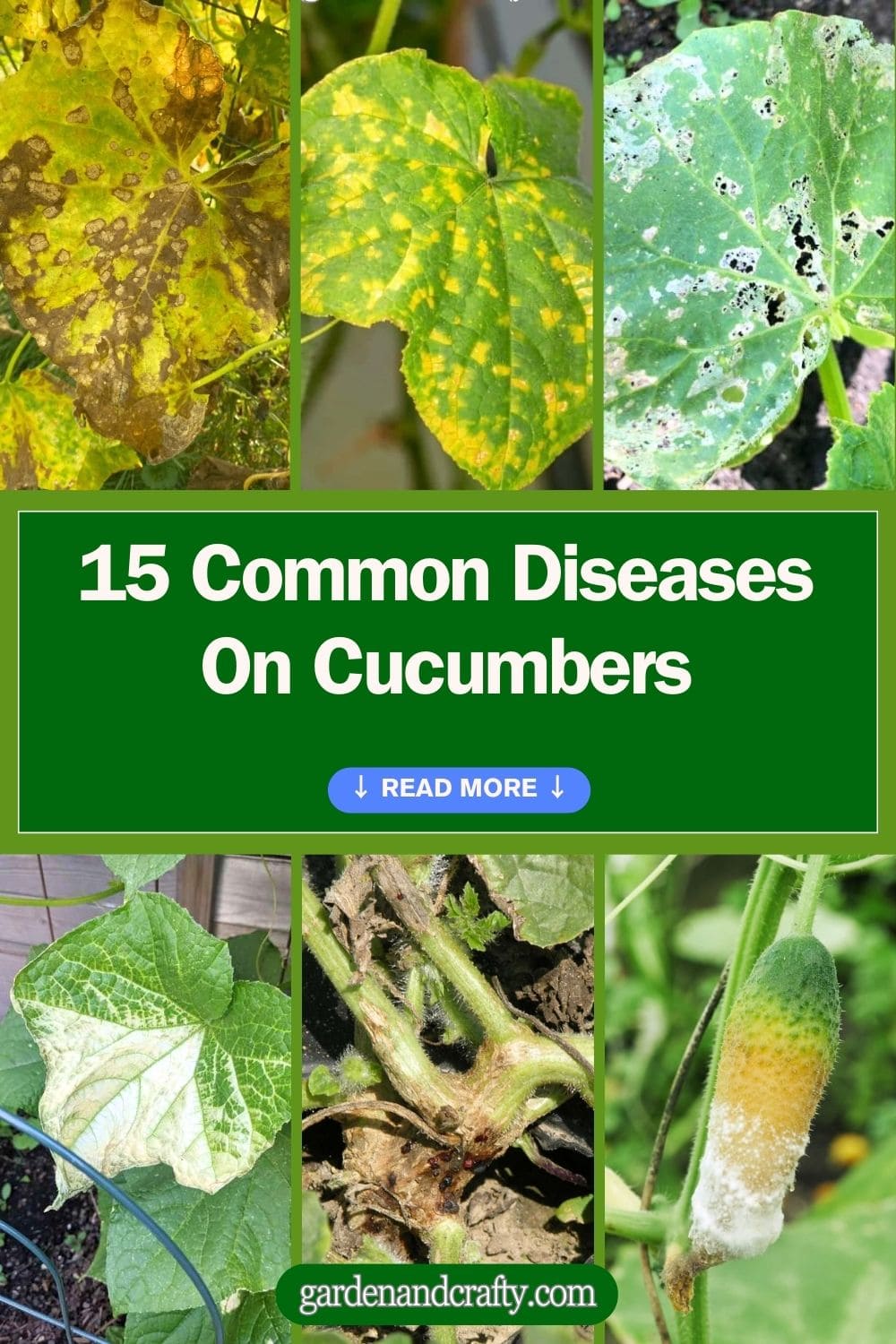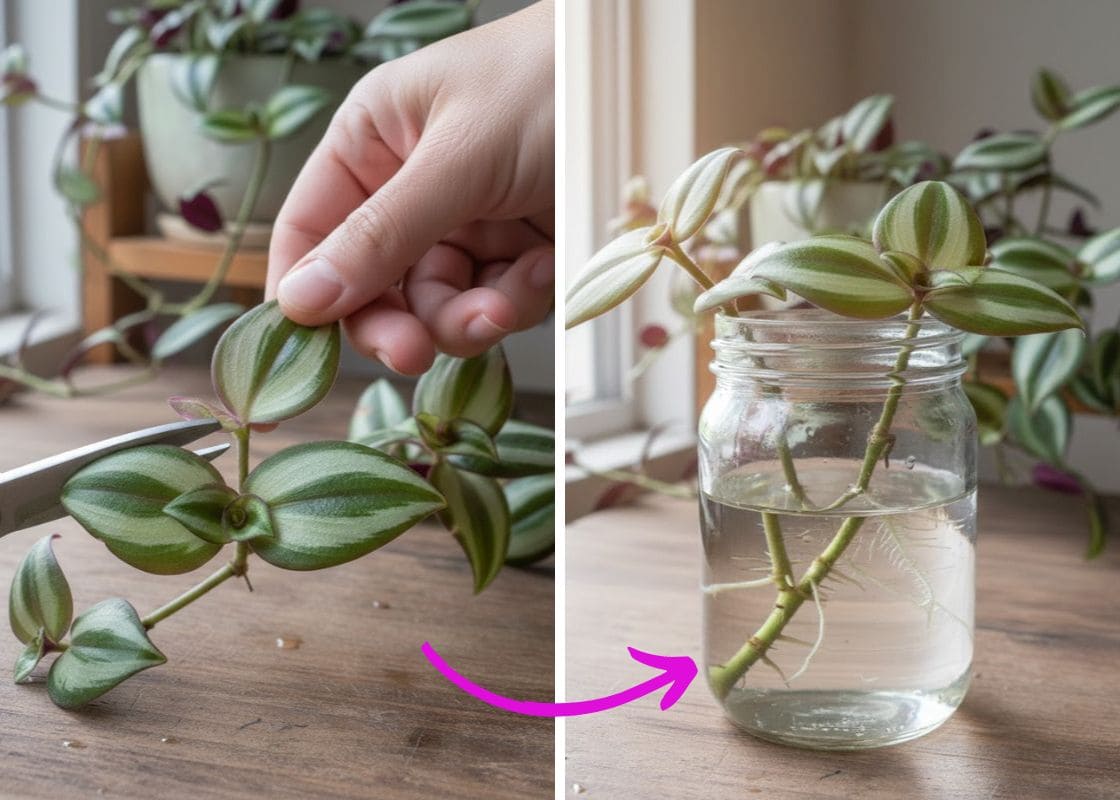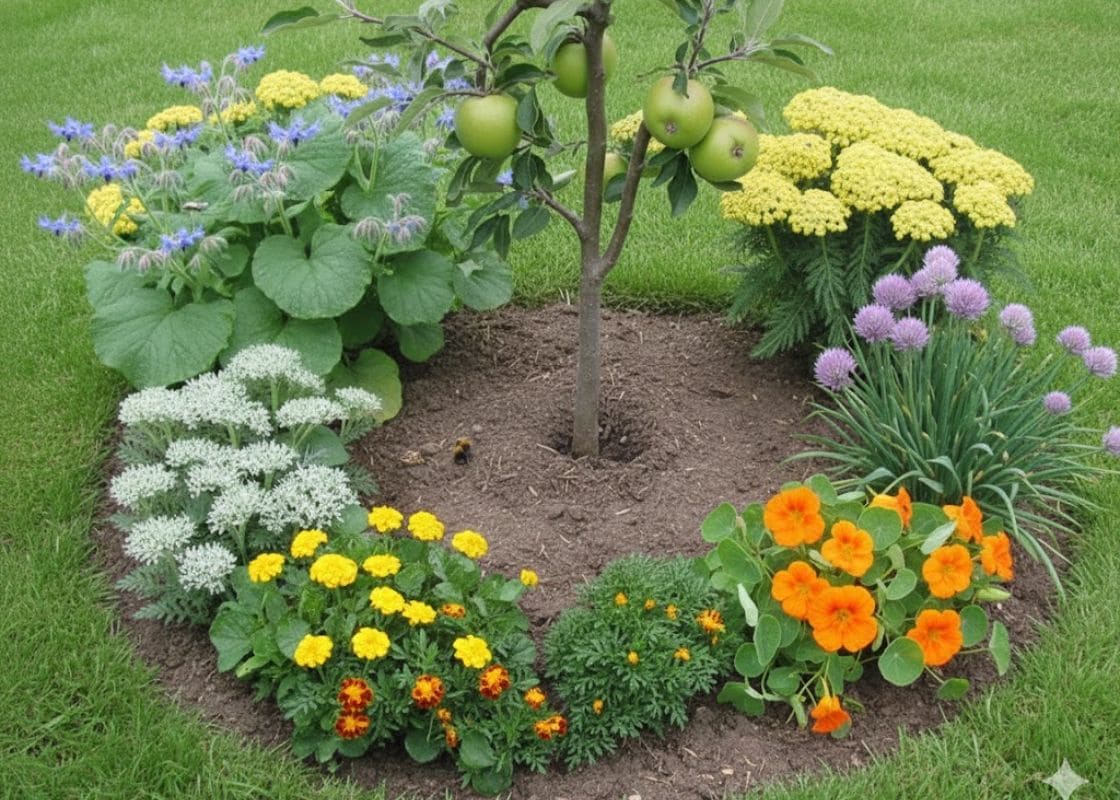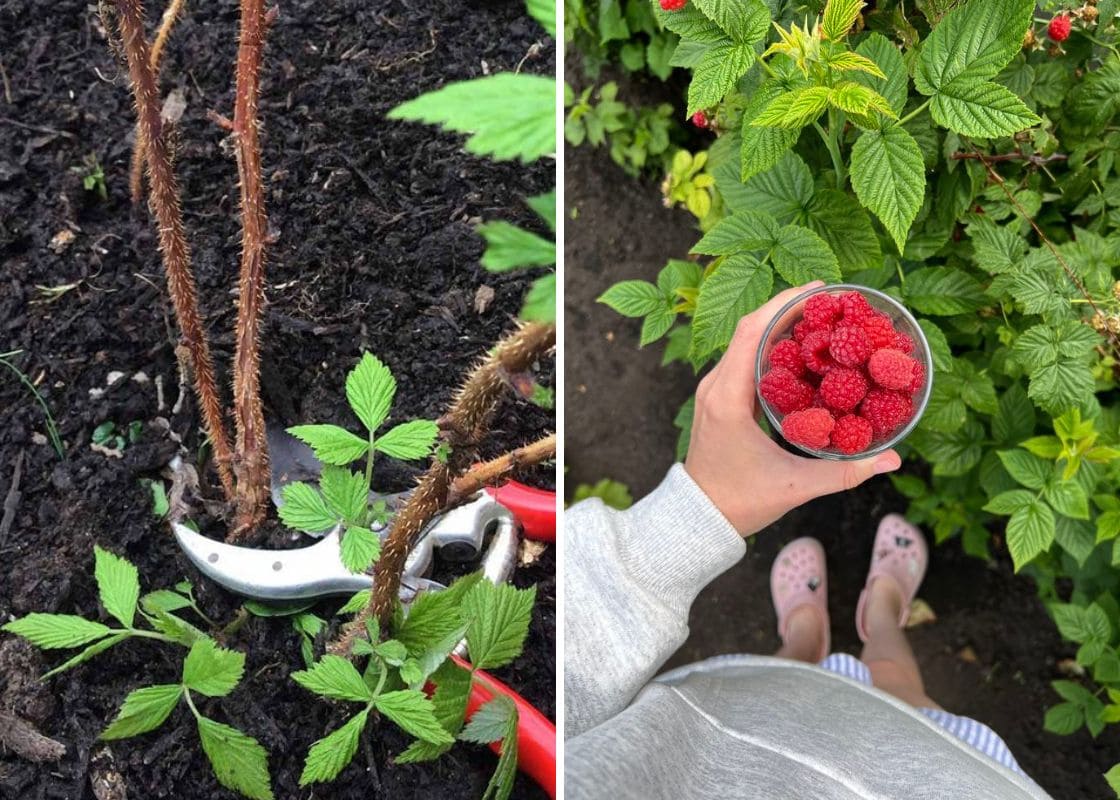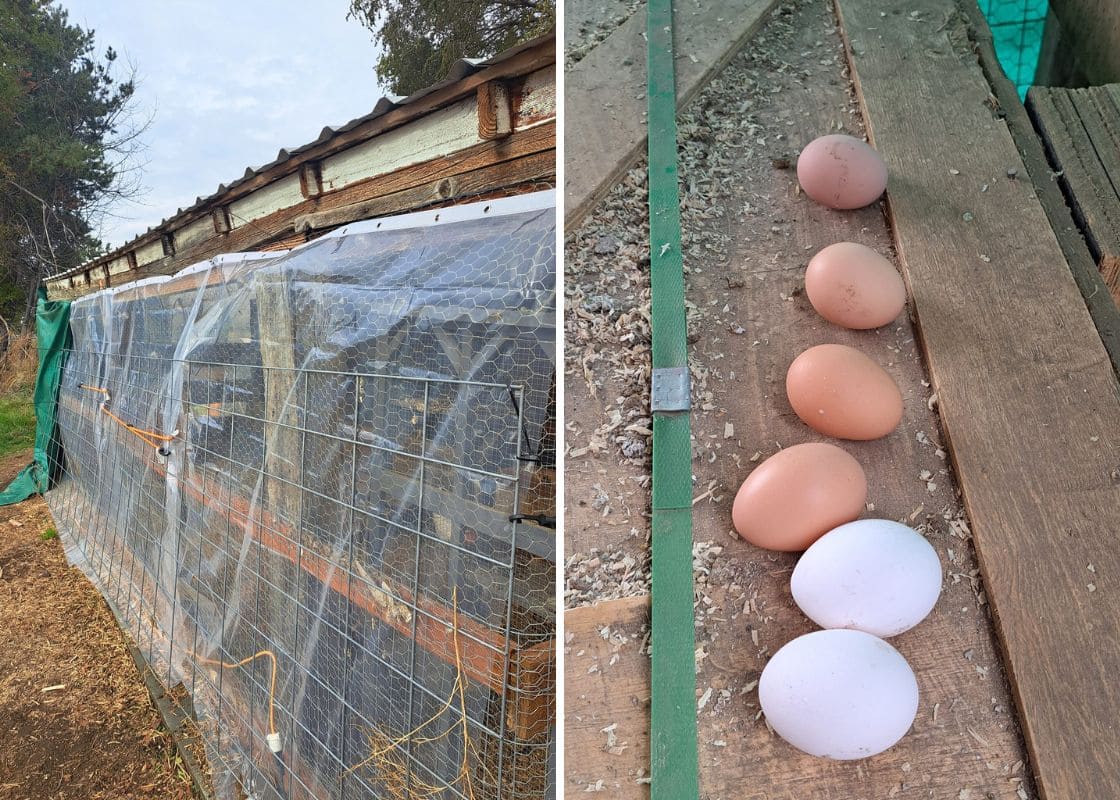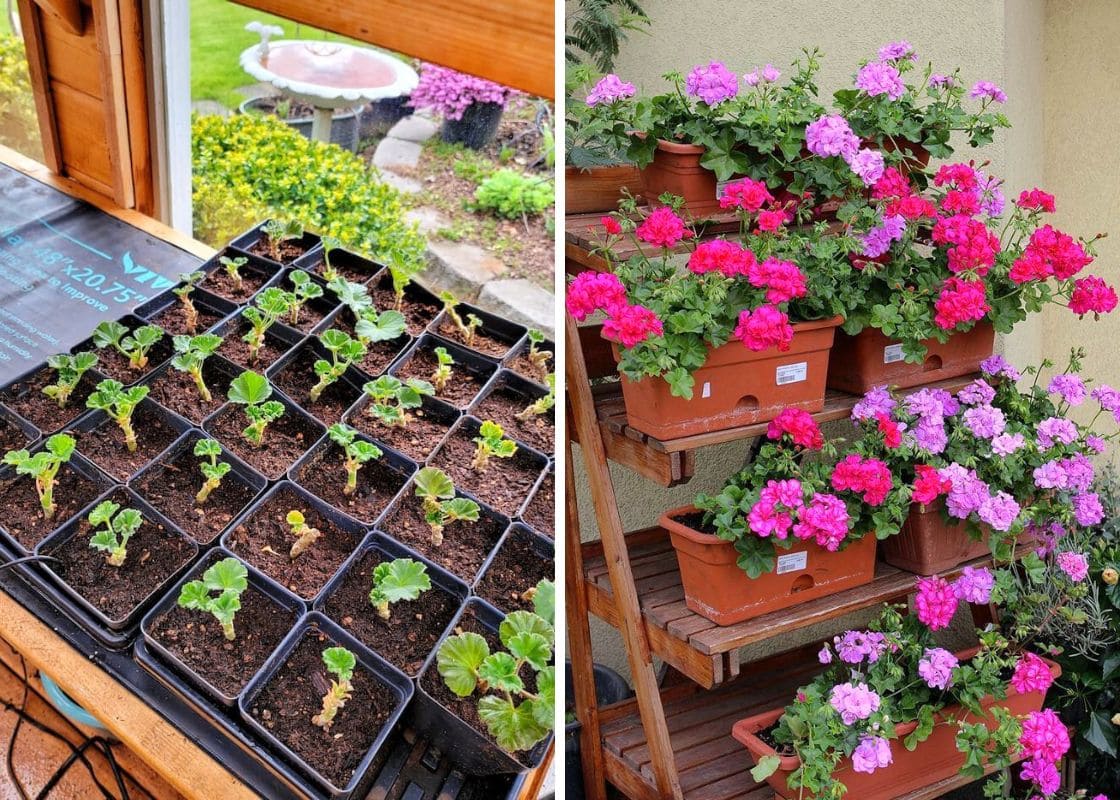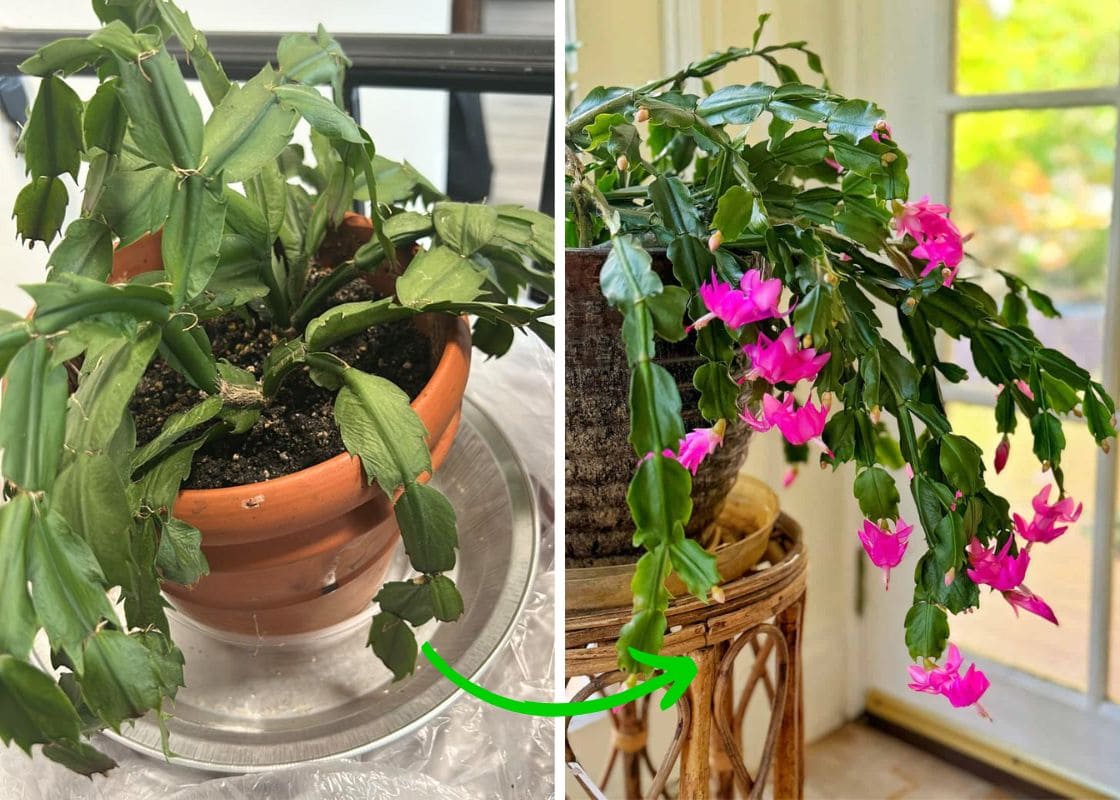Cucumbers, originating from South Asia, have become a beloved staple in gardens and kitchens worldwide.
These refreshing vegetables belong to the Cucurbitaceae family, which includes other popular plants like melons, squash, and pumpkins.
Besides many benefits, you usually have to manage the various diseases to which cucumbers are prone.
With their preference for warm, humid conditions, cucumbers create an ideal environment for many pathogens.
| Scientific name | Cucumis sativus |
| Common name | Cucumber |
| Length | Typically 15-25 cm |
| Weight | Typically around 100-300 grams |
| Shape | Cylindrical, elongated |
| Color | Green |
| Growth Habit | Climbing or trailing vine |
| Flowering | Yellow flowers |
| Texture | Smooth or slightly bumpy skin |
Powdery Mildew
Powdery mildew is characterized by white, powdery spots that appear on the leaves, stems, and sometimes even the fruits of cucumber plants.
These spots gradually spread, covering entire leaves and causing them to turn yellow and dry out. In severe cases, it can stunt the growth of your cucumbers and reduce fruit production.
Podosphaera xanthii is responsible for powdery mildew. It spreads through airborne spores, carried by the wind from one plant to another.
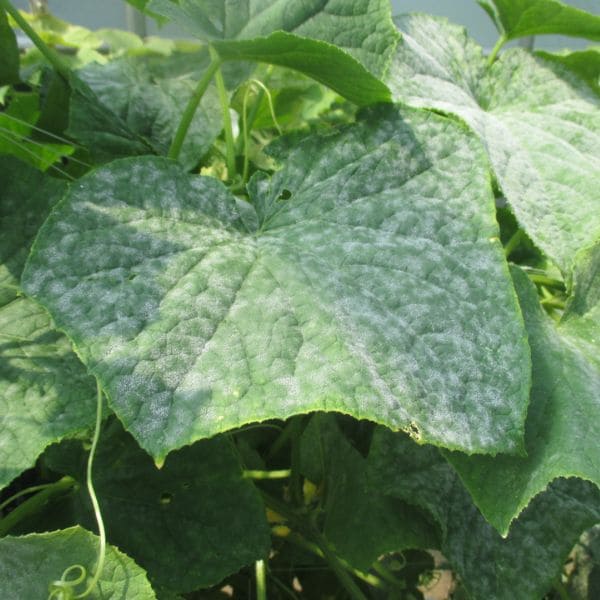
I recommend regular monitoring of your plants and removing any affected foliage immediately. Apply fungicides at the first sign of infection.
Additionally, ensure good air circulation around your plants by spacing them properly and avoiding overhead watering to prevent the spread of this disease.
Downy Mildew
Downy mildew manifests as yellow, angular spots on the upper surface of the leaves, often accompanied by a grayish mold on the underside.
These symptoms can quickly escalate, causing the leaves to curl, brown, and die, severely impairing the plant’s ability to photosynthesize.
This disease is caused by the Pseudoperonospora cubensis, which thrives in cool, moist conditions, typically making its appearance in late spring to early summer.
It spreads through water splash and wind, making it particularly challenging to control in humid climates.
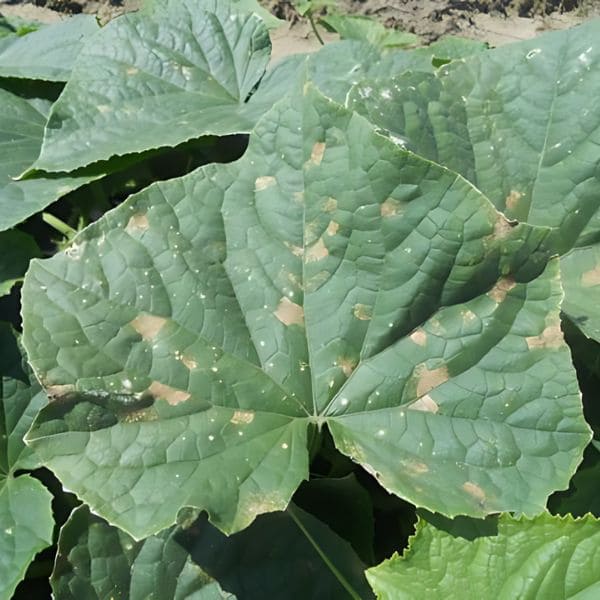
You can prevent downy mildew by selecting disease-resistant cucumber varieties like Marketmore 76 or Straight Eight and ensuring proper spacing for good air circulation.
Fungicides, especially those containing copper, can be effective if applied early.
Fusarium Wilt
Fusarium wilt is caused by Fusarium oxysporum, which infects the vascular system of the plant, leading to wilting and yellowing of the leaves.
The wilting often occurs during the hottest part of the day and may temporarily recover at night.
The fungus thrives in warm soil and can persist for years. This disease spreads through contaminated soil, water, and even gardening tools.
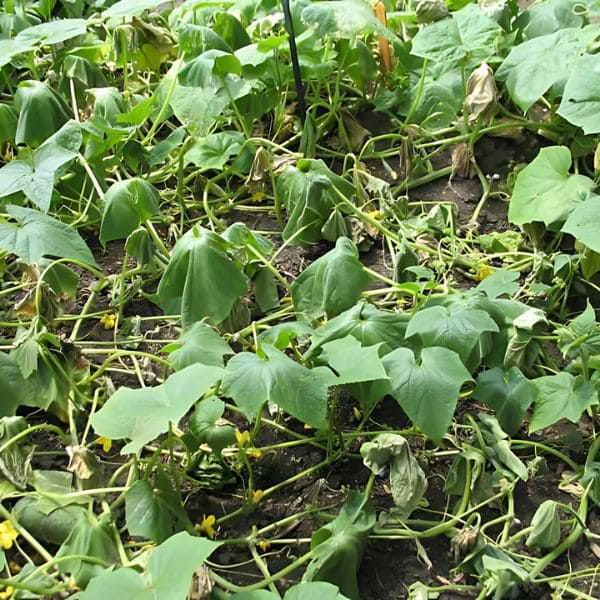
To manage fusarium wilt, crop rotation is essential. Avoid planting cucumbers or other susceptible plants in the same spot for several years.
Also, ensure your garden tools are sanitized regularly to prevent the spread of the fungus.
Sadly, once a plant is infected, there’s little you can do to save it, so prevention is key.
Anthracnose
Anthracnose is caused by the fungus Colletotrichum orbiculare and recognizable by distinctive dark, sunken lesions that appear on the leaves, stems, and fruits of cucumber plants.
These spots start small and can rapidly enlarge, leading to significant damage. On fruits, the lesions can cause rot, making them inedible.
This disease thrives in warm, humid conditions, typically emerging in late spring and persisting through the summer. It spreads via water splashes, rain, and contaminated tools or plant debris.
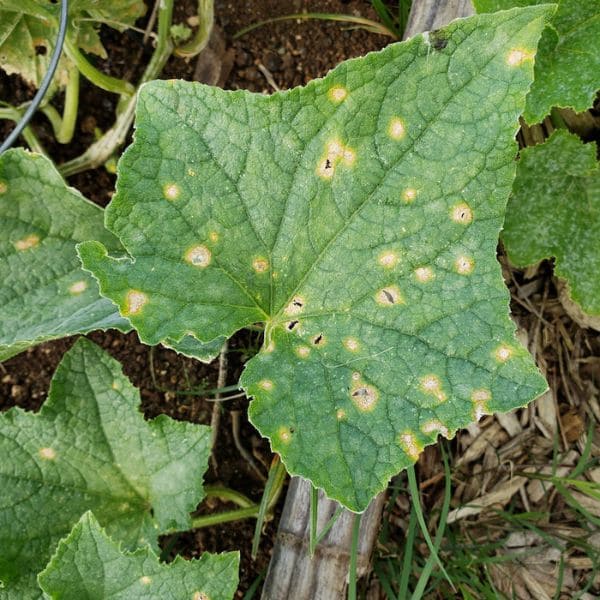
You should regularly inspect your plants and promptly remove and destroy any infected parts to prevent the disease from spreading.
To manage Anthracnose, start with selecting disease-resistant cucumber varieties and ensuring good air circulation by spacing your plants appropriately.
Additionally, practicing crop rotation and avoiding overhead watering can help minimize the risk of infection.
Root Rot
Root rot is primarily caused by overly wet soil conditions, which create the perfect environment for pathogens like Pythium, Phytophthora, and Rhizoctonia to thrive.
It causes yellowing leaves, wilting, and stunted growth. When you pull up an affected plant, you’ll see that the roots are brown, mushy, and decayed instead of being white and firm.
Poor drainage or heavy, compacted soil can lead to root rot. This disease spreads through the soil and water and occurs anytime during the growing season.
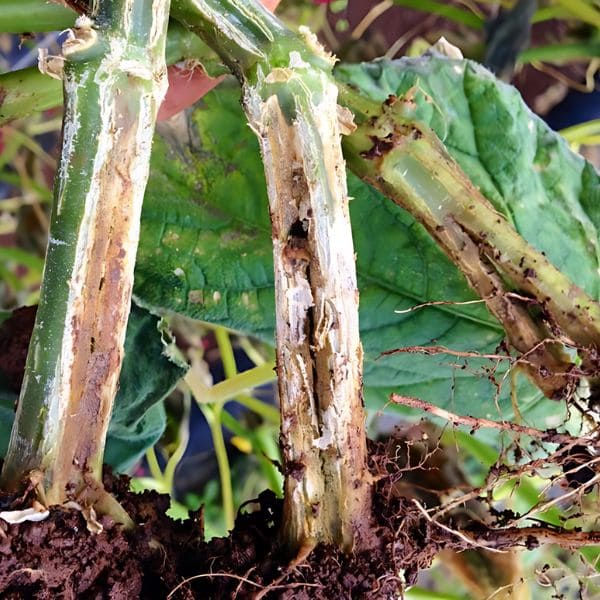
I suggest improving soil drainage by adding organic matter or sand to your garden bed and ensuring that water doesn’t pool around your plants.
If you have a plant affected by Root Rot, it’s best to remove and dispose of it to prevent the disease from spreading.
Bacterial Wilt
Bacterial wilt is caused by the bacterium Erwinia tracheiphila spread by cucumber beetles. Symptoms begin with leaves suddenly wilting and eventually turning brown and dying.
The affected parts are primarily the vascular system of the plant, where the bacteria multiply and block the water-conducting tissues, causing the plant to dehydrate.
Cucumber beetles are active in warm weather. They feed on the leaves and stems, leaving behind the bacteria invading the plant. Then the bacteria multiply, causing the plant to wilt and eventually die.
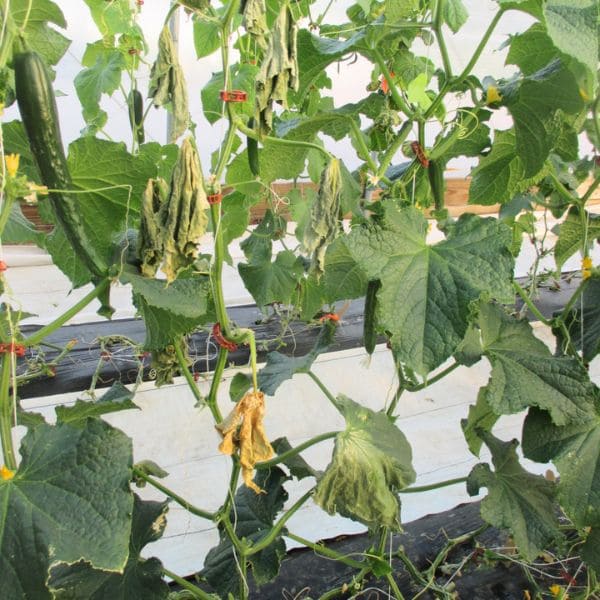
To combat bacterial wilt, you should use row covers early in the season to protect young plants from beetles.
Additionally, applying insecticides can help manage beetle populations.
Angular Leaf Spot
Pseudomonas syringae pv. Lachrymans cause angular leaf spots with small, water-soaked spots on the leaves.
These spots gradually enlarge and become angular, bordered by the leaf veins. Over time, they turn brown and dry out, giving the leaves a tattered appearance.
The disease primarily affects the leaves but can also spread to stems and fruit, causing blemishes and reducing marketability.
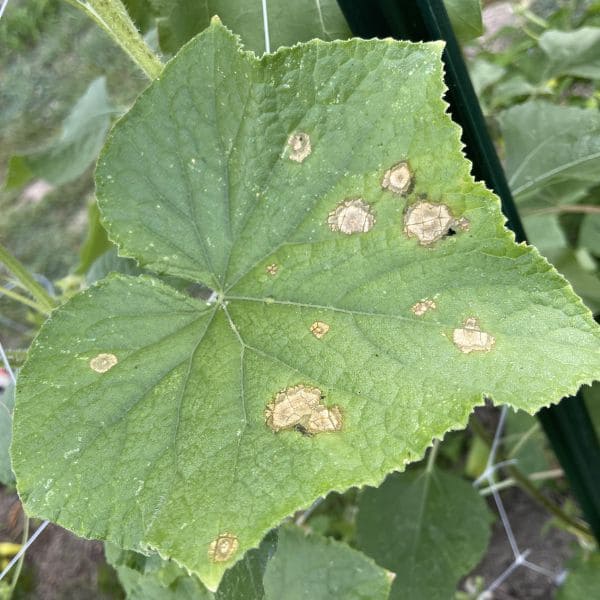
The bacteria thrive in warm, wet conditions and are spread through splashing water, whether from rain or irrigation.
To manage angular leaf spot, you should avoid overhead watering and ensure your plants are well-spaced to promote air circulation.
I also recommend using copper-based bactericides, which can be effective if applied early.
Cucumber Mosaic Virus
Cucumber mosaic virus (CMV) causes many symptoms, including mottled or mosaic-like patterns on the leaves, stunted growth, and distorted fruits.
The infected plants often exhibit a general decline in health, with leaves that are yellowing and curled.
CMV is primarily spread by aphids, which transmit the virus as they feed on the sap of infected plants. It can also be spread through contaminated tools.
This disease tends to be more prevalent during the warmer months when aphid populations are at their peak.
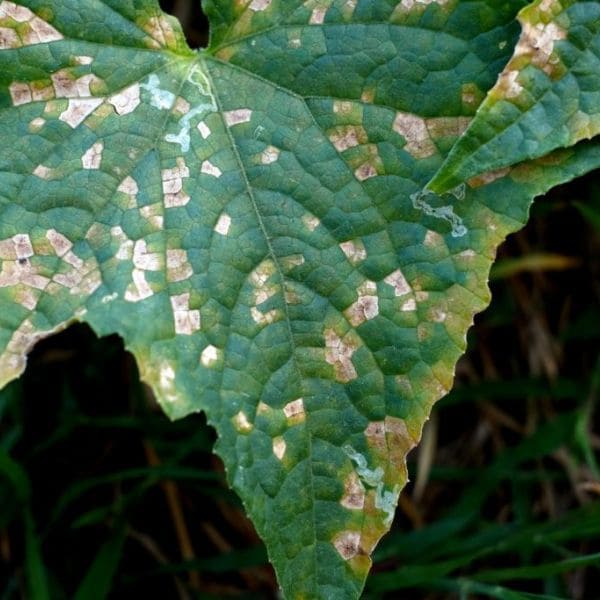
To manage CMV, you should focus on controlling aphid populations by introducing ladybugs, using insecticidal soaps, and removing weeds.
Additionally, you need to keep the garden clean and practice good sanitation, such as disinfecting tools and washing hands after handling plants.
Zucchini Yellow Mosaic Virus
Zucchini yellow mosaic virus causes yellowing and mosaic patterns on the leaves, stunted growth, and malformed fruits that can appear bumpy and mottled.
The leaves often become distorted and may develop a blister-like appearance.
ZYMV is spread by aphids, which transmit the virus as they feed on the plants. It tends to be more problematic in warm weather when aphid activity is high.
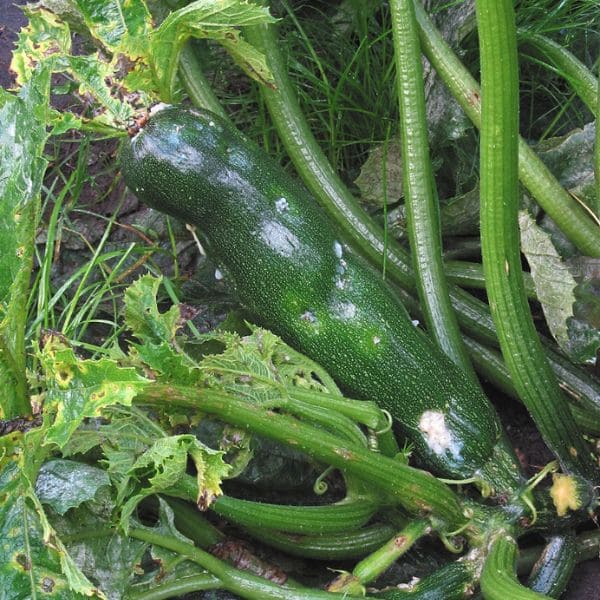
To manage ZYMV, you need to control aphid populations by using natural predators like ladybugs and applying insecticidal soaps.
Besides, remove and destroy infected plants to prevent the virus from spreading further.
Nematode Damage
The microscopic roundworms, particularly root-knot nematodes, wreak havoc on the roots of cucumber plants.
The symptoms often start with yellowing leaves and stunted growth, which can be easily mistaken for nutrient deficiencies or other issues.
Upon closer inspection, the roots reveal swollen, knotted galls that are the telltale sign of nematode infestation.
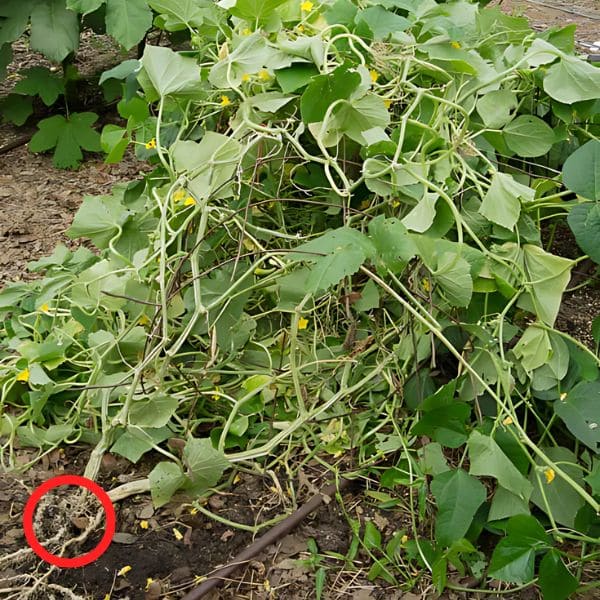
Therefore, you should rotate crops and avoid planting cucumbers or other susceptible crops in the same soil year after year.
I’ve found that incorporating compost into the soil can help because it promotes beneficial microorganisms that combat nematodes.
Also, solarizing the soil by covering it with clear plastic during the hottest part of the summer can also reduce nematode populations.
Damping Off
Damping off is a fungal disease affecting young seedlings and causing them to rot at the soil line and collapse. It’s disheartening to see a tray of promising seedlings wiped out almost overnight.
Damping off is caused by Pythium, Phytophthora, and Rhizoctonia. They thrive in cool, damp conditions, often striking in the early spring when the soil is still cold and wet.
The disease spreads rapidly through contaminated soil, water, and gardening tools.
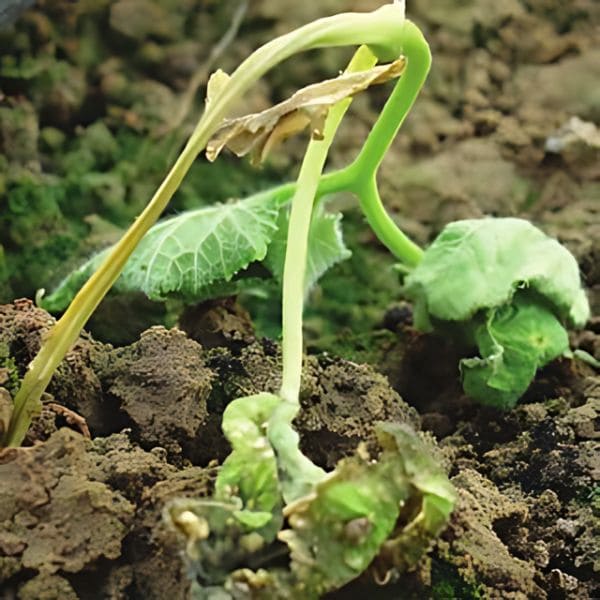
I’ve found that using sterilized soil and containers helps reduce the risk. Also, you should water from the bottom rather than the top to help keep the stems dry.
Keeping your seedlings in a warm, well-ventilated area and not overcrowding them can make a significant difference.
Gummy Stem Blight
Gummy stem blight is caused by the fungus Didymella bryoniae with brown, water-soaked lesions on the stems, leaves, and fruits of cucumber plants.
One of the most distinctive symptoms is the exudation of a gummy, amber-colored substance from the infected areas, particularly the stems.
This fungus thrives in warm, humid conditions and spreads through infected plant debris, water splashes, and contaminated tools in late spring.

To manage gummy stem blight, you need to remove and destroy infected plant parts as soon as symptoms appear.
Moreover, ensure your plants are well-spaced to promote good air circulation and avoid overhead watering to keep the foliage dry.
Alternaria Leaf Blight
Alternaria leaf blight caused by Alternaria cucumerina shows up as small, brown spots on the leaves that quickly expand into large, irregular lesions with concentric rings.
As the disease progresses, the leaves become brittle, dry, and eventually die off, severely reducing the plant’s ability to photosynthesize and affecting overall yield.
The disease primarily affects the leaves, but it can also spread to stems and fruits in severe cases. It typically emerges in late spring and continues through summer.
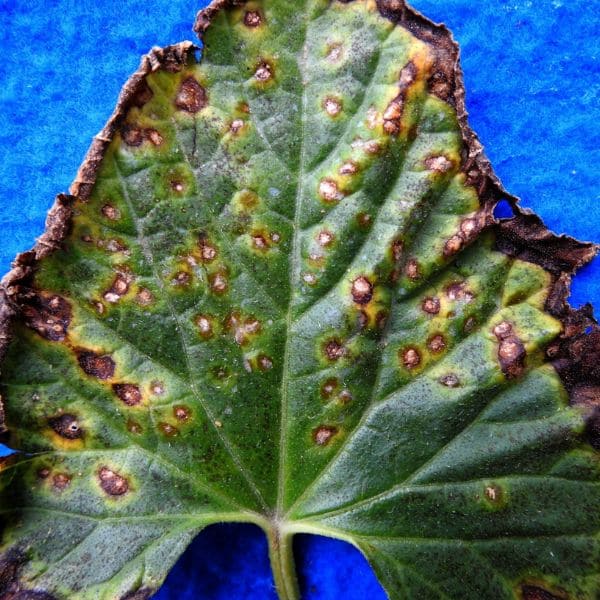
To control alternaria leaf blight, you should practice crop rotation and avoid planting cucumbers in the same spot year after year.
Fungicides can be effective if applied early, but it’s crucial to maintain good garden hygiene.
Verticillium Wilt
Verticillium wilt is caused by the fungus Verticillium dahliae, this disease manifests as yellowing and wilting of the leaves, starting with the older, lower leaves.
The vascular system of the plant becomes discolored, and the plant’s overall vigor declines.
Infected plants often show symptoms during hot weather, as the fungus blocks water transport within the plant.

To manage verticillium wilt, you need to avoid planting cucumbers and other susceptible crops in the same area for several years.
Besides, choosing resistant cucumber varieties such as Sweet Success or Bush Champion can also help mitigate the impact.
Scab
Scab is caused by the fungus Cladosporium cucumerinum, first appears as pale, water-soaked spots on the leaves and stems.
These spots soon turn into sunken, scabby lesions, particularly on the fruit, which can cause them to become misshapen and unmarketable.
The lesions on the fruit are especially damaging because they not only make the cucumbers look unattractive but also render them inedible.
The disease thrives in cool, moist conditions, making early spring and late fall the most common seasons for outbreaks.
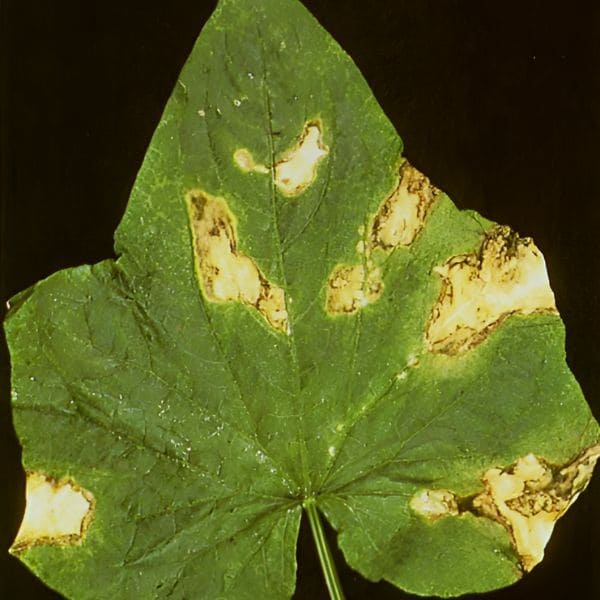
To prevent scab, you should ensure good air circulation by spacing plants properly and avoiding overhead watering.
When noticing symptoms, promptly remove and destroy the infected parts to prevent the spread.
